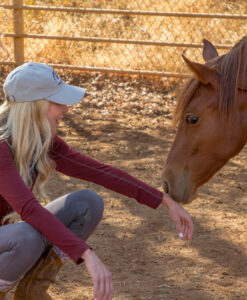Social Communication
Communication goes far beyond just words and sentences. Effective communication includes understanding the unwritten rules of social interaction—knowing when to speak, how to read facial expressions, how to take turns in conversation, and how to adapt our communication style to different situations and partners. While this can be found in a clinical setting, we take a different approach as we use horses to communicate ~Often called equine-assisted learning (EAL).
Equine Assisted Learning (EAL) is a non-therapeutic approach that uses interactions with horses to help individuals develop life skills, enhance personal growth, and improve relationships. It involves experiential learning activities that can benefit various groups, including those facing personal challenges or seeking personal development.
How Horses Help:
- Horses participate in sessions by facilitating experiential learning. Participants engage in activities that promote self-awareness, emotional regulation, and problem-solving skills. The interaction with horses helps individuals learn social and life skills in a hands-on environment.
- Horses are sensitive animals that respond to human emotions and body language. This responsiveness allows participants to practice non-verbal communication and develop empathy.
- Sessions often include activities such as grooming, leading, and navigating obstacle courses. These tasks help participants build confidence, leadership, and self-advocacy.
- Interacting with horses has been shown to have physiological benefits, such as improved heart rate variability and reduced stress levels.
- Individual or small groups sessions can be accommodated. One or more horses may be used. Riding is not involved. Sessions last 1 hour or more.


